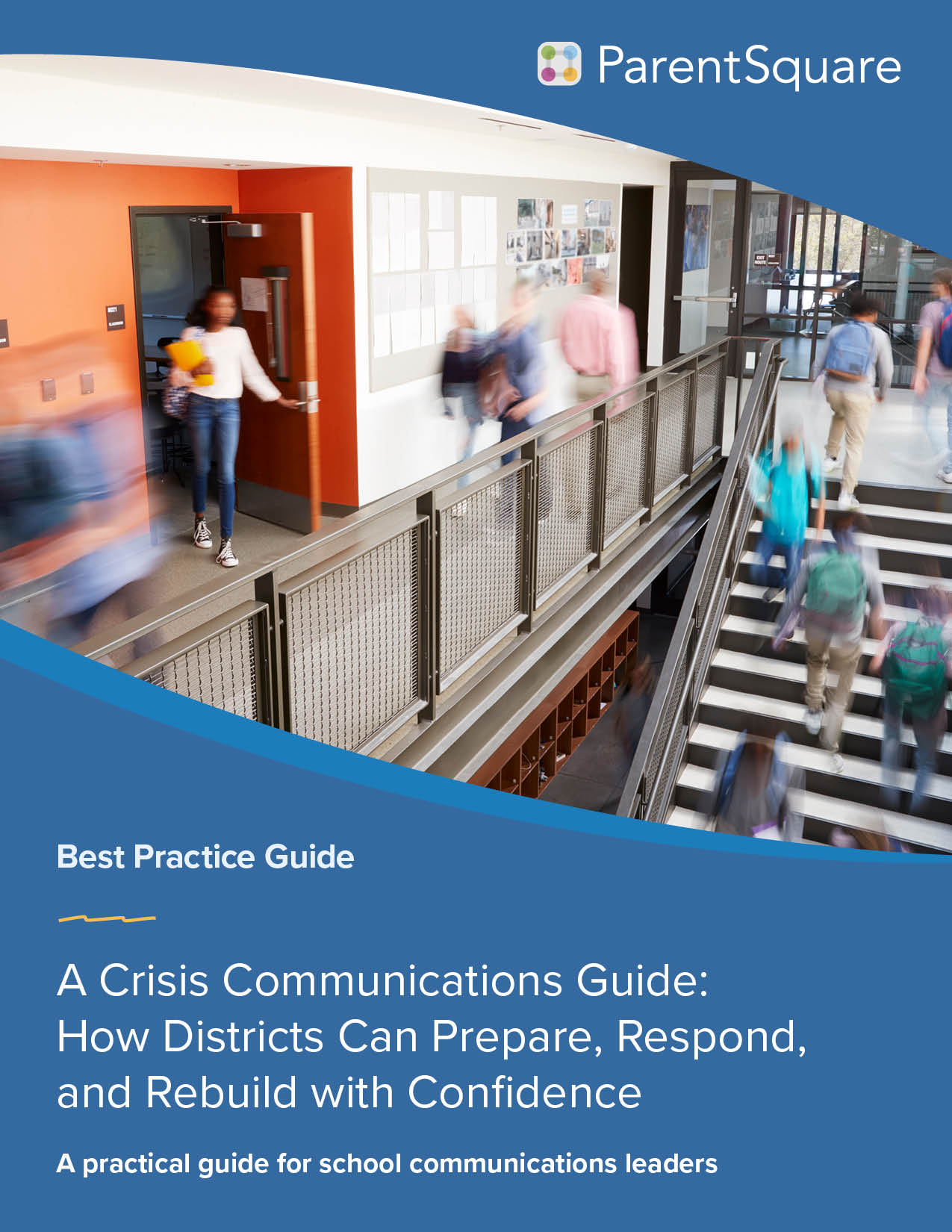
At ParentSquare, we work with districts that use their brands to help achieve a variety of outcomes, from increasing student enrollment to supporting teacher recruitment and retention. A memorable brand can help attract families into your district and encourage them to stay informed and engaged, and one of the most effective ways to introduce and strengthen your district brand is through unified, consistently branded communications.
As a project, “branding” might seem time-consuming and complicated. But building and maintaining your district brand doesn’t require a splashy rebrand, pricy tech solutions, or for your staff to become marketing experts. At its heart, a successful brand is one that gets your community to see and feel what makes your district special, and you don’t need unlimited time and resources to make an impact.
In this blog, we’ll share some tips to help kickstart or revitalize your district brand so you have the tools to uplevel your communications—on ParentSquare or anywhere else.
What’s in a brand?
Your district brand communicates what sets your district apart: your culture, your values, and everything else that makes you stand out.
Think of instantly recognizable brands like Nike and Coca-Cola. Most of us can recognize their logos, slogans, and even specific ad campaigns, and you probably also have some impression of the identity and values they try to put forward, whether that’s perseverance and drive (Nike) or unity and connection (Coca-Cola).
Of course, school districts aren’t multinational corporations, and it doesn’t make sense to approach branding with the exact same objectives and outputs that a business would. The two companies mentioned above are both brands powered by billions of dollars and decades of advertising. Still, it can be helpful to use them as examples of the two key parts of an effective brand.
A brand typically consists of a visual look and feel as well as an identity that translates into what you say as well as how you say it. If you’re looking to revisit your district brand, the first and most important step is to define it.
Showing everyone who you are: Building your brand identity
When you’re building your brand, it might be tempting to start (and end) with the visual elements, since those are what usually catch the eye first. But knowing who you are makes it much easier to express yourself to others, and that’s where your brand identity—your district’s values and personality—comes in.
Values

Your district’s brand values lay out a framework for expressing who you are. These can be based on your district mission, motto, or slogan, or they can highlight strengths and focus areas unique to your community.
Many districts (as well as companies) have a single mission statement that articulates a vision for your community—something that everyone recognizes represents your overarching goal. Mission statements usually focus on what your organization aims to achieve and often include a nod to how you plan to get there. It’s a lot to pack into what’s usually a single sentence, but that’s what makes mission statements powerful.
The mission statement is also frequently accompanied by core values, or principles that guide your community’s actions. These can be as simple as key characteristics—like integrity, service, growth, excellence—or they can be statements that explain your district’s root beliefs and expectations.
Together, your values will inform the messaging you use across all of your touchpoints, from office signage to digital communications. The more your district recognizes and uses these values, the stronger your brand will be.
Voice and tone
Your brand’s voice and tone is how you communicate your district’s values. Think of this as your district’s personality: What are the characteristics or traits that your community associates with your district?
To define this personality, start with a few adjectives that you’d like your district to embody. For example, do you want families to feel that your district is positive and approachable? Or is it more important for them to see your district as empathetic and warm? Innovative and high-achieving?
Once you’ve identified these attributes, you’ll have a blueprint for developing voice and tone guidelines that your district can use. These often get into the details of language, like whether to use contractions and exclamation points, or specific words and phrases you’d prefer to use. It can be easy to get lost in the weeds here, but what’s most important is landing on a voice and tone that feels true to your district.
Making an impression: Developing your brand look and feel

Once you’ve mapped out your district’s brand identity, you’ll be in a great place to get creative with how you want to express it visually. The project of developing a brand’s look and feel can snowball into a massive undertaking, but it doesn’t need to be.
Here are the elements you’ll want to include:
- Logos: What is your district’s primary logo? How does it represent or relate to your district’s brand identity? Is it more or less professional-looking than the image you want to communicate? These considerations extend to the schools in your district as well. While schools have individual logos, do they look like they’re related to each other and to your district?
- Color palette: What are the colors that represent your district? What do they convey about your district’s personality? Are the colors in your palette neutral and calming? Dark and strong? Bright and energetic? Unique and distinctive?
- Fonts: What fonts does your district use in your communications? What kind of impression do they create? Are they playful? Classic? No-nonsense? Whatever font styles you choose, remember that legibility comes first, especially for body text.
- Imagery: What types of visual images (photography, illustration, artwork) best represent your district’s brand identity? What do they say about your community? What kind of feelings do they convey?
You can always go into more depth in these areas, but starting here will give you a toolkit that you can use to pull your brand across your district’s key touchpoints. (More on this in the future!)
Putting it all together
Together, all of these elements affect how your stakeholders feel about your brand and, by extension, your district. Once you’ve spent some time defining your brand identity and visual look and feel, you’ll have the fundamental pieces you need for brand guidelines that you can begin to apply and extend across your communications and other touchpoints, which can include updates, newsletters, alerts, and more.
Your brand guidelines might not have agency-level polish, but hopefully by now it’s clear that “polish” isn’t what makes or breaks a brand—authenticity is. By understanding and articulating what you’d like to represent, you’ve already taken one important step in building your district brand and setting yourself up for what’s next.
ParentSquare makes it easy to apply your brand through consistent communication with your community. If you’re interested in how you can amplify your district’s voice and strengthen your district’s identity with ParentSquare’s unified communication platform, sign up for a demo here. Our team is always happy to connect!
For more resources on creating brand guidelines for your district, including real district examples and a template that you can copy and use, check out Part 1 of The Complete District Communications Playbook: Elevating Your Brand.
This is the first blog in a series on simple, high-impact strategies for building your district brand. Next up: Now that you’ve done the work of defining your brand, how do you start putting it into action?

